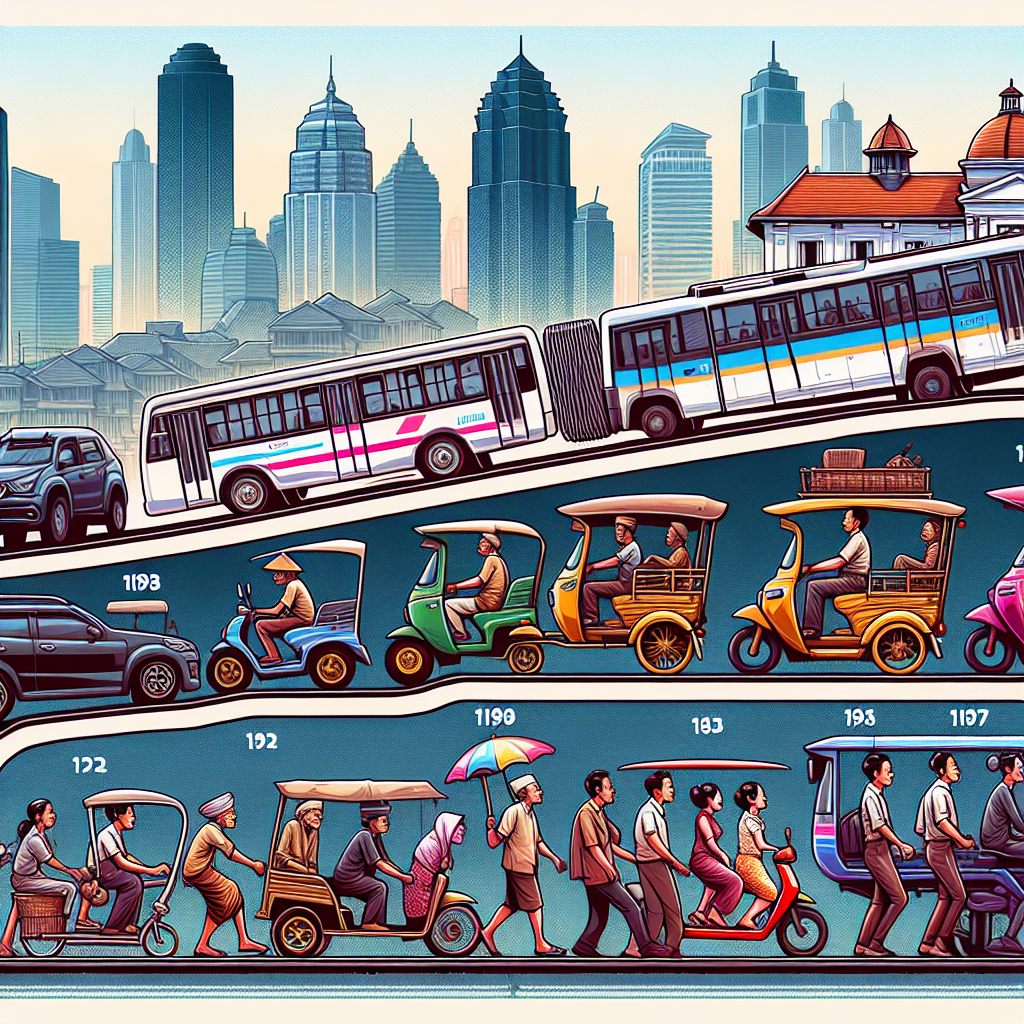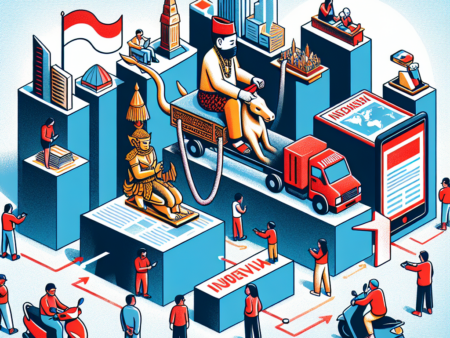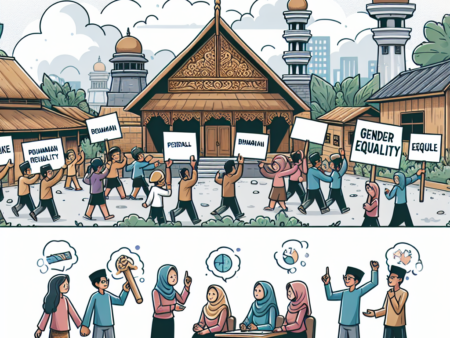Perkembangan Transportasi Umum di Jakarta: Meningkatnya jumlah moda transportasi dan infrastruktur untuk memenuhi kebutuhan mobilitas penduduk.
Perkembangan Transportasi Umum di Jakarta
-
Table of Contents
Introduction

Jakarta, the capital city of Indonesia, is known for its bustling streets and heavy traffic. With a population of over 10 million people, the city faces numerous challenges in terms of transportation. However, over the years, Jakarta has made significant progress in developing its public transportation system. This article will explore the history and development of public transportation in Jakarta, highlighting key milestones and initiatives that have shaped the city’s transport landscape.
The Early Years
In the early years of Jakarta’s development, public transportation was limited to traditional modes such as horse-drawn carriages and bicycles. As the city grew, the need for a more efficient and reliable transportation system became evident. In the 1920s, the first electric tram system was introduced, connecting various parts of the city. This marked the beginning of a more organized public transportation network in Jakarta.
The Rise of Buses
In the 1960s, the electric tram system was gradually phased out, and buses became the primary mode of public transportation in Jakarta. The introduction of buses brought about a significant improvement in mobility within the city. However, the rapid increase in private vehicle ownership led to congestion on the roads, making bus travel less efficient.
The Birth of TransJakarta
Recognizing the need for a more efficient and sustainable public transportation system, the Jakarta government launched TransJakarta in 2004. TransJakarta is a bus rapid transit (BRT) system that operates on dedicated lanes, allowing for faster and more reliable travel. The introduction of TransJakarta revolutionized public transportation in Jakarta and became a game-changer in reducing traffic congestion.
Features and Benefits of TransJakarta
TransJakarta offers several features and benefits that have made it popular among commuters. The dedicated bus lanes ensure faster travel times, especially during peak hours when traffic congestion is at its worst. The system also uses a smart card payment system, making it convenient for passengers to pay for their fares. Additionally, TransJakarta buses are equipped with air conditioning, comfortable seating, and free Wi-Fi, providing a more pleasant commuting experience.
Expansion and Integration
Since its inception, TransJakarta has undergone significant expansion and integration with other modes of transportation. The network has expanded to cover more areas of the city, with over 13 corridors and hundreds of bus stops. TransJakarta has also integrated with other modes of transportation, such as the commuter train system, allowing passengers to seamlessly transfer between different modes of transport.
Challenges and Future Plans
While TransJakarta has been successful in improving public transportation in Jakarta, the city still faces several challenges. One of the main challenges is the lack of last-mile connectivity. Many areas in Jakarta are not well-served by public transportation, making it difficult for commuters to reach their final destinations. To address this issue, the Jakarta government has plans to introduce feeder buses and improve pedestrian infrastructure.
Integration with Online Transportation Services
Another challenge is the rise of online transportation services such as ride-hailing apps. While these services provide convenience and flexibility, they have also contributed to increased traffic congestion. To tackle this issue, the Jakarta government has implemented regulations to ensure better integration between online transportation services and public transportation. This includes designated pick-up and drop-off points for ride-hailing vehicles at TransJakarta stations.
Future Plans and Innovations
Looking ahead, the Jakarta government has ambitious plans to further improve public transportation in the city. One of the key initiatives is the development of the Jakarta MRT (Mass Rapid Transit) system. The MRT will provide an underground rail network, connecting various parts of the city and offering a faster and more efficient mode of transport. The first phase of the MRT, which opened in 2019, has already made a significant impact on reducing traffic congestion.
Summary
In conclusion, Jakarta has come a long way in developing its public transportation system. From the early days of horse-drawn carriages to the introduction of TransJakarta, the city has made significant progress in improving mobility and reducing traffic congestion. The future looks promising with the expansion of TransJakarta, integration with other modes of transportation, and the development of the Jakarta MRT system. While challenges remain, the Jakarta government’s commitment to improving public transportation will undoubtedly lead to a more sustainable and efficient transport system for the city.







